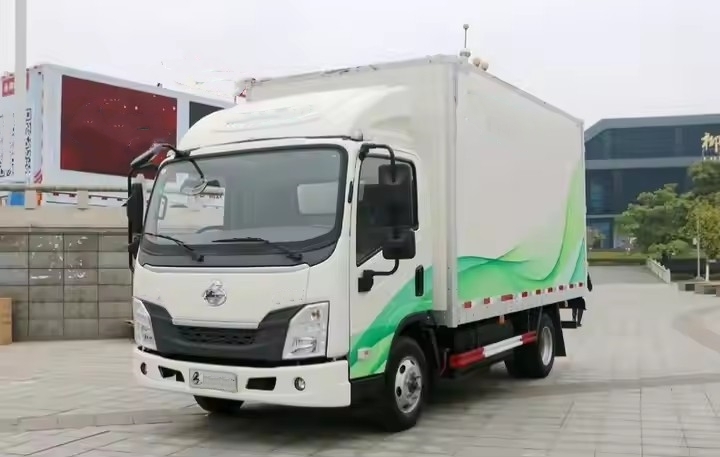Electric Truck Knowledge
Comprehensive Guide to Using New Energy Vehicles
In recent years, with strong support from national policies, the pure electric vehicle industry has developed rapidly. Traditional fuel vehicle users are transitioning to NEV users, and as product technology advances, users’ operational habits and awareness should also improve. After all, pure electric vehicles are still a relatively new product for many consumers. With the increasing number of NEV users, various issues have emerged. So, how should electric vehicles be used properly?
Compared to traditional fuel vehicles, the biggest difference in pure electric vehicles lies in the power system. To maintain the peak performance of an electric vehicle, it is crucial to take good care of its three core electrical components, especially the power battery.
This article, compiled by professional NEV engineers, provides the most comprehensive guidelines for using electric vehicles. It serves as a reference for industry professionals and NEV users alike.
1. Power Battery Usage Guidelines
1.1 Charging the Battery Pack
- Ensure the vehicle remains dry, apply the parking brake, and engage neutral or park mode before charging.
- It is not necessary to turn on the 12V low-voltage power switch or ignition key.
- Insert the charging gun firmly into the vehicle’s charging port, confirm that it is locked securely, and then turn on the charging station.
- After the charger completes its self-check, press the charging button. During charging, avoid any vehicle operation and do not touch the battery pack or charging cables.
- Place a warning sign near the charging vehicle.
- Stop charging when any single battery cell reaches 4.15V or the total voltage reaches the upper charging limit. Then, turn off the charger before unplugging the charging gun.
- If any abnormalities occur during charging, immediately cut off the power and contact after-sales support.
Charging with Household Electricity
- Ensure the main power cable in your home is at least 4mm² copper wire or 6mm² aluminum wire to handle sufficient current.
- Use a power strip with 2.5mm² copper wire or 4mm² aluminum wire to prevent overheating.
- Install a 32A leakage protection switch on the main power line and use a 16A, 3C-certified power strip.
- Regularly inspect charging plugs, sockets, and charging guns for damage or aging, replacing them if necessary.
1.2 Discharging the Battery Pack
- Before starting, turn on the 12V power switch, insert the key, and wait for the READY light to illuminate.
- Monitor individual cell voltage on the dashboard. If any cell drops below 3.3V, avoid sudden acceleration and high-speed driving. If it drops to 3.0V, stop immediately and call for assistance to prevent irreversible damage.
- Monitor battery pack temperature. If it exceeds 60°C, stop and call for service.
- Always accelerate gradually and avoid sudden braking.
- If the state of charge (SOC) drops below 20%, head to the nearest charging station.
- Avoid discharging the battery below 10% SOC to extend its lifespan.
- Conduct at least one charge-discharge cycle per month for optimal performance.
1.3 High-Voltage Safety Precautions
- Only trained personnel should handle high-voltage components.
- When inspecting high-voltage circuits, turn off auxiliary power and remove the maintenance switch.
- Always wear insulated gloves and maintain a safe distance when measuring high voltage.
- High-voltage hazards include electric shock, burns, eye damage, metal vapor inhalation, and hearing impairment.
1.4 Parking Guidelines
(1) Power Battery
- Store the vehicle at room temperature and avoid direct sunlight.
- Before long-term parking, ensure the SOC is above 50%. Every three months, check if any single cell voltage drops below 3.6V and recharge if necessary.
- Fully charge the battery at least once during extended storage.
(2) Auxiliary Battery
- If the vehicle is parked for more than five days, disconnect the negative terminal (-) to prevent battery depletion.
2. Air Conditioning Usage Guidelines
2.1 Proper Use of the Air Conditioning System
- Always start the vehicle before turning on the AC and turn it off before shutting down the car.
- In hot weather, open the doors and windows to vent hot air before turning on the AC.
- Use the face-level air outlet for cooling in summer and face-foot mode in winter.
- Use recirculation mode for rapid cooling, but switch to fresh air mode periodically to prevent air stagnation.
- Avoid using low fan speed at low speeds (below 25km/h) to prevent battery drain.
- After turning off the AC, keep the fan running for 1-2 minutes to prevent mold buildup.
- Use defrost mode with the compressor on for effective window defogging.
2.2 Air Conditioning Maintenance
- Replace cabin air filters every 12 months or 20,000 km.
- Clean the evaporator fan and condenser fins regularly.
- Run the AC for 10 minutes every 1-2 weeks during off-seasons to maintain seals.
- If there is an unpleasant odor, use a specialized cleaner.
- If the AC loses cooling power, have it checked for refrigerant leaks (only use R-134a refrigerant).
3. Vehicle Usage Guidelines
3.1 Towing Precautions
- Always remove the drive shaft before towing.
- If possible, lift the rear wheels off the ground.
- Improper towing may cause irreparable damage to the motor.
3.2 Daily Precautions
- If parked long-term, ensure SOC remains above 50%.
- Ideal battery operating temperature: 15–40°C; avoid extreme temperatures.
- Store the vehicle in a dry, elevated location, away from corrosive liquids and fire hazards.
- Conduct monthly charge-discharge cycles if the vehicle is unused for a long time.
- Avoid deep discharges—charge whenever possible.
- Avoid sudden acceleration and braking to conserve energy.
- If driving range drops suddenly, visit an authorized service center for inspection.
- Keep your Battery Management System (BMS) updated for longevity.
3.3 Extreme Weather Guidelines
(1) Summer Precautions
- Avoid prolonged exposure to direct sunlight.
- Do not charge immediately after high-temperature driving; let the battery cool first.
- Do not overuse the AC, as it reduces driving range.
(2) Rainy Weather Precautions
- Drive slowly through waterlogged roads (>200mm depth).
- Avoid driving in water deeper than 300mm.
- Ensure charging ports are dry and free of debris before charging.
(3) Winter Precautions
- Charge the battery before it gets too low in cold weather.
- If parked for more than two weeks, store the battery at 50% SOC.
- If the battery temperature drops below 0°C, it will preheat itself before charging.
- Drive smoothly to maintain range in cold weather.



